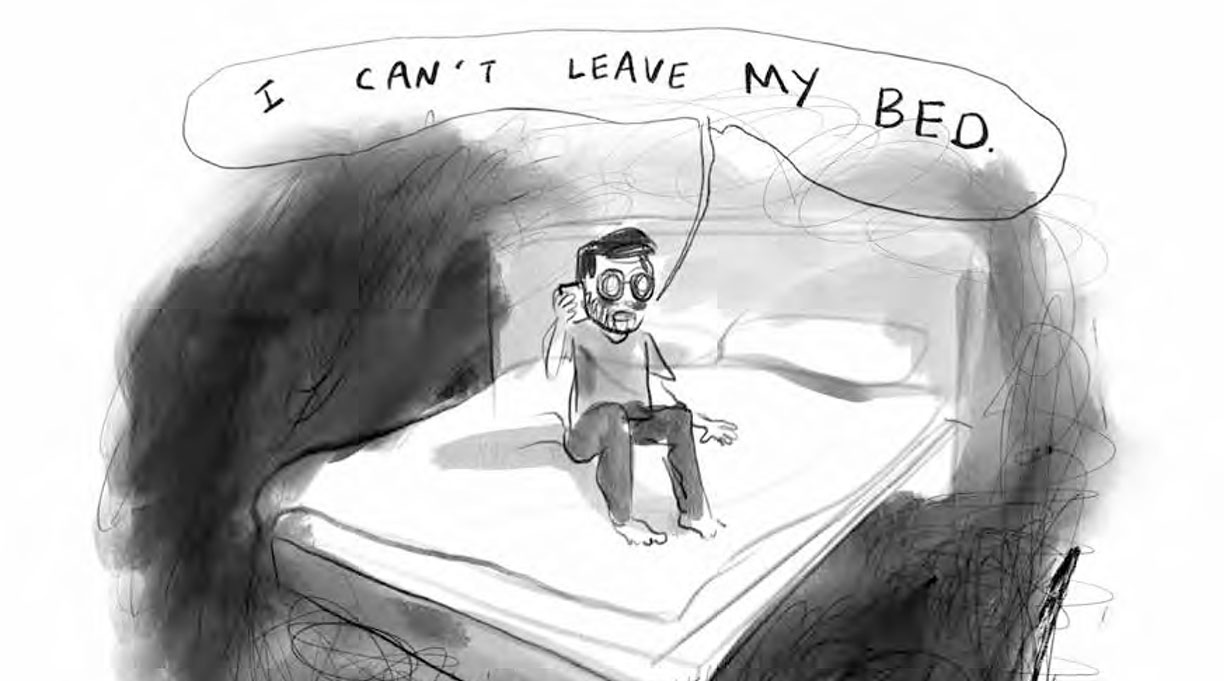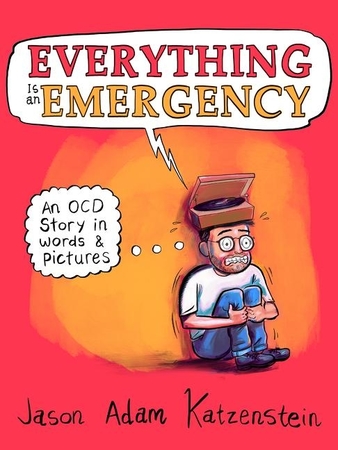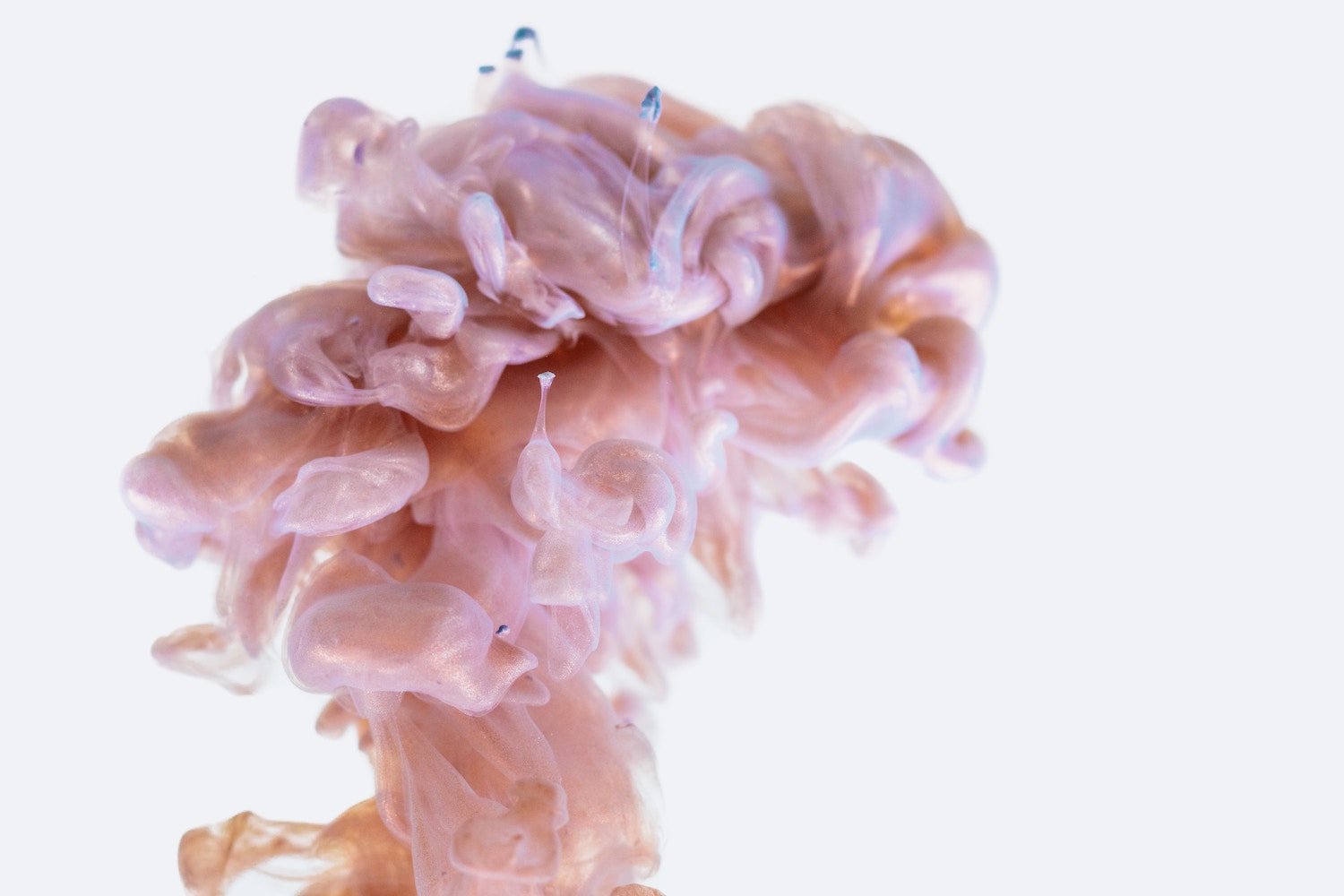interviews
A “New Yorker” Cartoonist Untangles His OCD Through Comics
Jason Katzenstein's graphic memoir "Everything Is an Emergency" shows the funny and serious sides of mental illness

When Jason Adam Katzenstein, a cartoonist at The New Yorker, was first diagnosed with obsessive compulsive disorder as a preteen, there weren’t many resources available to help him understand what living with OCD would look like. Almost everything he read presented a pessimistic picture of what his outlook should be. That’s one of the reasons he decided to write his graphic memoir Everything is an Emergency: An OCD Story in Words in Pictures. Using humor and metaphor Katzenstein tracks his illness from being a nebulous collection of fears that ordered his life to a treatable disorder which could be managed with medication and therapy.
There are many memes that joke about “the mortifying ordeal of being known” but with OCD, nothing rings truer. I endured five years of intrusive thoughts before receiving my own diagnosis. It mainly took so long because I was terrified to speak about my experience out loud. I had no reference points on screen or in literature to understand what was occurring in my brain. I didn’t have Katzenstein’s book. If I did, I think I would have been able to speak—and joke—about what I suffered through much earlier. (Though I probably still couldn’t draw it.)
Much of Katzenstein’s book details what it’s like to have contamination OCD, a specific subset of the anxiety disorder where sufferers become preoccupied with being infected by germs or getting sick. We talked about what it’s like to manage those fears during a pandemic, how his story came to be, and why OCD sufferers like us are skilled at finding hope in the small things. (Short answer: because we have to.)
Alexa Abdalla: I haven’t personally experienced contamination OCD but I have so much empathy for those who have, especially right now when the exposure therapy process is being put to the test. A major component of it, as you lay out in your book, is refuting the idea that washing your hands constantly is a matter of life and death, but now, we’re all being told that it is.
Jason Katzenstein: It’s probably a very challenging time to do contamination exposures. Weirdly, my contamination stuff has not really flared up too much.
The fact that everybody’s wearing gloves and masks and being freaked out about getting close to each other and touching each other, there’s this perverse quality to that where it feels like people are responding in the real world to a situation similar to how the contamination OCD brain has always thought of the world. But I guess the fact that it is really happening also makes it difficult to leave room for OCD? I don’t have time to have contamination OCD because I actually have to put on my mask and my gloves and sterilize my groceries. That’s real shit that everybody’s doing right now, so I can’t even think about OCD responses because I just have to be a person actually living in the actual world right now.
Alexa: There are so many reasons why I’m excited your book exists. The fact that it’s a visual representation of OCD is awesome because it is such a visual illness. It seems like accurate representations of this illness are pretty scarce, and you even mention this in your book how all the books you were able to get your hands on when you were younger make it easy for people to get it wrong. When I started telling people I had OCD they were like, Oh, so you wash your hands a lot like Howie Mandel?
I don’t have time to have contamination OCD because I actually have to put on my mask and my gloves and sterilize my groceries.
Jason: I think Girls did a good job with it. I’m trying to think of some others. As Good as it Gets, I think, is okay. It does an okay job. Also, Alison Bechdel in Fun Home.
Alexa: Oh, really? I haven’t read that.
Jason: She has OCD. And writes about it very well.
Alexa: I feel like there might be a lot of overlap with artists and OCD tendencies.
Jason: I think comics, specifically, is a medium where there’s some overlap. The language of comics is the juxtaposition of words and images next to each other and they form relationships the same way that you have a thought that feels like it has a relationship to another thought or another action, something like, “step on a crack, break your mother’s back.” Readers read comics and they make meaning from the relationship between the panels so it’s like, this happens, then this happens, so I conclude based on these two pieces of information that this is the meaning of the thing, which is absolutely how OCD works, too.
Alexa: What did you read that helped you tell this story better?
Jason: Fran Lebowitz. I mean, there are a lot of memoir comics I love and Liana Finck makes great ones. Gabrielle Bell. Some Daniel Clowes comics I read as a kid. But Fran Lebowitz really felt like the template for somebody who could be funny and also clearly not okay. And Vivian Gornick, who’s so great at writing about being in New York and is really a great curator of the subtle detail of an interpersonal relationship. I guess my book is more Fran Lebowitz-y in that I’m often alone and hanging out with my own brain. I just think she’s so funny, and can also paint like an unflinching portrait of unhealthy habits, so I took a lot from her essays.
These are the versions of these stories that are my version, and I’m sure that somebody else would tell it a different way.
Alexa: Was there a reason why some people had human faces and some people had animal faces?
Jason: That was a draft one million epiphany and I think it has to do with my ambivalence about some of the conventions of memoir storytelling, because this is, I guess, a memoir? But also, large swaths of my life and important people in it are left out and I also never wanted to depart from the fact that reality is distorted through the medium of my outlook, which is in flux. I think that when you’re looking at a talking animal, it’s hard to forget that this is coming out of someone’s brain. Rather than try and pretend to know the full lives and outlook of these other characters, I wanted to emphasize that this is a very myopic, hermetic account that comes from my brain. These are the versions of these stories that are my version, and I’m sure that somebody else would tell it a different way.
Alexa: In your book, you mention a common refrain in OCD therapy which is, “It’s not me—it’s my OCD.” At the same time, your memoir is subtitled “an OCD story.” How do you make the distinction?
Jason: I’m 29. I was 28 when I finished this. I don’t think that my life story is done. I hope not. I feel pretty young to be writing about my own life. I feel like the story of my relationship to OCD is something that moves around enough that I can visit over the course of the book and tell that story and it can start when I’m little and end in my late 20s but it will still feel like a full story where things happen and things change.
I think the story of my relationship to OCD is untangling what is OCD, how intrinsic some of these qualities are.
I also think the story of my relationship to OCD is untangling what is OCD, how intrinsic some of these qualities are, and what’s more malleable and negotiable. A thread throughout is creativity and trying to sort of navigate the relationship between creativity and anxiety. There are a lot of unsettled questions for me there, but the answers I know are not simple. Certainly, I don’t suffer and that’s why I create art. Nor do I feel like I can completely extricate the way my brain thinks about things from the way I make things. Part of editing is that desire for control. Or like, fear. Fear is not exactly OCD, but fear is one of the engines of OCD so the story doesn’t begin with OCD but it begins with fear because I think that it’s relevant.
Alexa: Your book is broken up with these images of yourself as Sisyphus, perpetually pushing a boulder up a hill, which I think is a great metaphor for the chronic nature of OCD. The reader sees you improving, but still, you write toward the end, “Somewhere, friends of mine are angry with me. I may have left the oven on, and the door unlocked.” The thoughts are still there, they’re just not as loud, and it makes clear, there’s no end to this for you, or for me, or for anyone suffering from OCD. But I think there’s still hope in that.
Jason: What freaked me out when I was first diagnosed was the “it never goes away” thing. But I guess I also felt pretty inspired going to an AA meeting with my friend who’s in the program and just a room full of supportive people dealing with a similar thing where it’s like this doesn’t go away. You show up every day and choose, and it can be easier sometimes and sometimes it’s more difficult. The first version of this book ended on more of a note of everything feeling settled and tied up in a way that rang false. And also, that doesn’t actually feel like hope because if hope can only exist when all of the questions have been answered and all of the worries have been whisked away, none of us are ever going to be able to feel any sort of hope. Being clear-eyed about tiny victories is the only hope I know.









